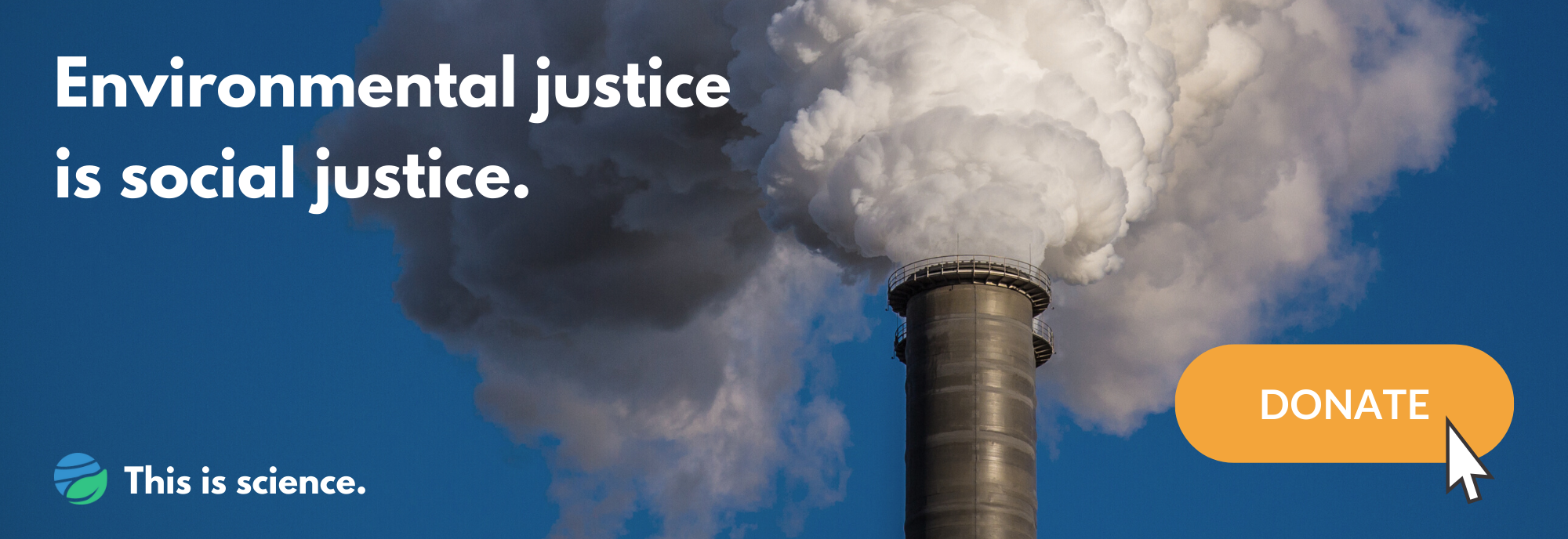Our zip codes are more important than our genetic codes in predicting our overall health and lifespans.
Pittsburgh and southwestern Pennsylvania face unique environmental health challenges. This guide explores those challenges and how you can help address them.
What is environmental health?
Environmental health is the relationship between human health and our environment.
The field of environmental health is a branch of public health that looks at the health effects of everything from air pollution and water contamination to toxic chemicals in consumer products and climate change.
These issues impact the health, wellbeing and longevity of people who live in some places more than others — including Pittsburgh and southwestern Pennsylvania.
Why is environmental health important in Pittsburgh and southwestern Pennsylvania?
Pittsburgh and southwestern Pennsylvania have long been home to extractive and manufacturing industries that substantially impact the environment and human health.
Long ago the region was home to the lumber industry, then some of the world’s first oil wells and coal mining, then steel mills, and now natural gas extraction and petrochemical plants.
Many cities, towns and neighborhoods throughout southwestern Pennsylvania were populated and built around these industries, so local politics historically have been led or heavily influenced by industry insiders. This resulted in policies that prioritize industrial growth, often at the expense of the environment and human health. The effects of these practices and policies still linger today.
The region also features unique topography with plentiful mountains and valleys that influence the way pollutants move through the environment (or don’t) and who is most impacted by them.
Air pollution in Pittsburgh and southwestern PA
During the steel industry’s heyday, the air in Pittsburgh was so polluted it looked dark during the daytime.
The region’s air has improved drastically since the federal Clean Air Act was enacted in 1970. But southwestern Pennsylvania still regularly sees some of the most polluted air in the country.
What Pittsburgh and southwestern Pennsylvania’s air pollution problems mean for our health:
- Higher cancer risk
- Allegheny County is in the top 2% of all U.S. counties for cancer risk from air pollution
- Pennsylvania has the third highest cancer rate of all U.S. states, and Pittsburgh and surrounding regions have higher than state average rates of certain types of cancer — particularly those associated with exposure to pollution, including:
- Lung cancer
- Colon cancer
- Breast cancer
- Bladder cancer
- Non-Hodgkin lymphoma.
- A 2021 study estimated that even if everyone in Allegheny County had quit smoking 20 years ago, lung cancer rates would only be 11% lower, further suggesting that pollution plays a significant role in the region’s lung cancer rates.
- For contrast, in the other 612 counties throughout the U.S. included in the study, lung cancer rates would have dropped an average of 62% if everyone had quit smoking 20 years ago.
- Asthma and other respiratory diseases
- Exposure to air pollution can cause childhood asthma, which is a huge problem in Pittsburgh
- In Pittsburgh’s most polluted neighborhoods, elementary schools have asthma rates as high as 42%—more than five times as high as the national rate
- A study of 1,200 elementary school students in Pittsburgh’s most polluted neighborhoods found that more than 70% of kids live in areas with air pollution levels that exceed World Health Organization guidelines
- Air pollution is also an important risk factor for other respiratory diseases, like chronic obstructive pulmonary disease, which impacts more than 70,000 residents of Allegheny County
- From 2011 to2017 (the most recent data available), COPD or asthma among older adults represented the highest rate of preventable emergency room visits in Allegheny County.
- Heart disease
- Air pollution is a key risk factor for cardiovascular health
- Heart disease is the leading cause of death in Allegheny County, and the county’s rate of death from heart disease is higher than the state average.

Bryan (left) and Ryan Latkanich (right) in front of their Fredericktown, Pennsylvania, home. Bryan has been fighting the fracking industry for years over pollution near his home.
Credit: Connor Mulvaney for Environmental Health News
- Mental illness
- Worrying about air pollution can cause stress or anxiety, but exposure to air pollution can also physically alter our brains in ways that increase the risk of mental illness
- From 2018 to 2020, 40% of adults in Allegheny County reported having one or more days where their mental health was “not good”
- These figures were higher in Allegheny County than in half of other Pennsylvania counties, and slightly higher than state averages.
- The town of Clairton, about 15 miles south of Pittsburgh, is in the worst 25% of U.S. cities for the percentage of adults experiencing 14 or more days of poor mental health each month.
- Autism
- Neurological disorders
- Exposure to air pollution is also linked to Parkinson’s disease, Alzheimer’s disease and dementia in older adults.
- Pregnancy complications
- Exposure to air pollution has been linked to pregnancy complications like preeclampsia, gestational hypertension and premature birth in general, and in Allegheny County specifically.
- Premature death.
- Exposure to air pollution is linked to increased risk of premature death (dying before the age of 75).

Terrie Baumgardner and Bob Schmetzer of the advocacy group Beaver County Marcellus Awareness Community.
Nate Smallwood for Environmental Health News and Sierra Magazine
Sources of continued air pollution in Pittsburgh and southwestern Pennsylvania include:
- Industrial emissions
- The Pittsburgh region is home to a number of large scale polluters.
- Just 10 industrial sites emit 60% of industrial air pollution in Allegheny County, according to the environmental advocacy group PennEnvironment.
- Clean air advocates have long complained that the region operates under a “pay to pollute” model.
- This means the fines companies receive for breaking clean air laws are so small that it’s cheaper to pay them than it would be to stop.
- For example, U.S. Steel was fined $1.8 million for pollution from the Clairton Coke Works in 2022. This is equivalent to a fine of $15.68 for a typical Pittsburgh household earning the 2019 median income of $48,711 — substantially less than a parking ticket.
- The Pittsburgh region is home to a number of large scale polluters.
- Oil and gas emissions
- Pennsylvania is second only to Texas in U.S. natural gas production, with much of the extraction in southwestern Pennsylvania
- The fracking industry emits around 5,648 tons of volatile organic compounds and more than 100,000 tons of methane every year
- Exposure to emissions from oil and gas wells have been linked to a range of health impacts, from skin and respiratory irritation to organ damage and increased cancer risk
- A 2021 study by Environmental Health News found that families living near fracking wells in southwestern Pennsylvania are exposed to harmful chemicals through air pollution
- Conventional oil and gas wells, both active and abandoned, also contribute substantially to the region’s air pollution problems, in addition to hastening climate change.
- Traffic emissions.
Traffic emissions are important sources of air pollution in all urban areas, but a 2020 study found that in Pittsburgh, industrial sources are larger contributors to certain types of air pollution than traffic.
Water contamination in Pittsburgh and southwestern PA
The quality of surface water and drinking water also influence the environmental health of a population.
Pittsburgh and southwestern Pennsylvania have had longstanding issues with contaminated waterways, lead pipes and aging infrastructure. The region, like much of the U.S., also has problems with PFAS (per- and polyfluoroalkyl substances).
What Pittsburgh and southwestern Pennsylvania’s water pollution problems mean for our health:
- Higher risk of learning disabilities
- Higher risk of mental illness
- Emerging research suggests that childhood lead exposure can also lead to mental health impacts later in life
- Kids born in the 1970s experienced widespread exposure to high levels of lead during childhood due to leaded gasoline.
- In Allegheny, Butler, Washington, and Westmoreland counties—the four most populated counties in western Pennsylvania—there are around 371,656 people between the ages of 40 and 54 who likely experienced high levels of lead exposure as children and may now be experiencing mental health impacts as a result
- Subsequent generations of western Pennsylvanians have also been exposed to lead during early childhood through water contamination.
- Increased risk of other diseases from exposure to PFAS
- Exposure to PFAS is linked to health problems including kidney and testicular cancer, liver and thyroid problems, reproductive problems, pregnancy-induced high blood pressure, low birthweight, increased risk of birth defects, changes in cholesterol levels and hormones, and lower vaccine effectiveness in children.
- Risk of acute illness for vulnerable populations
- Certain groups are more likely to get sick from bacterial contaminants in drinking water, including infants, young children, people who are pregnant, older adults and people with weakened immune systems like those living with HIV, undergoing chemotherapy or taking transplant medications.
- Risk of illness or infection from contact with waterways during sewage overflows .
- Contact with sewage-contaminated waterways exposes people to E. coli and fecal coliform bacteria, which can cause infections and flu-like symptoms.

Downtown Pittsburgh at The Point, where the Ohio, Allegheny, and Monongahela Rivers converge.
Credit: Kristina Marusic
Sources of water…
Read More:A guide to environmental health in southwestern Pennsylvania
2022-10-24 09:30:30


